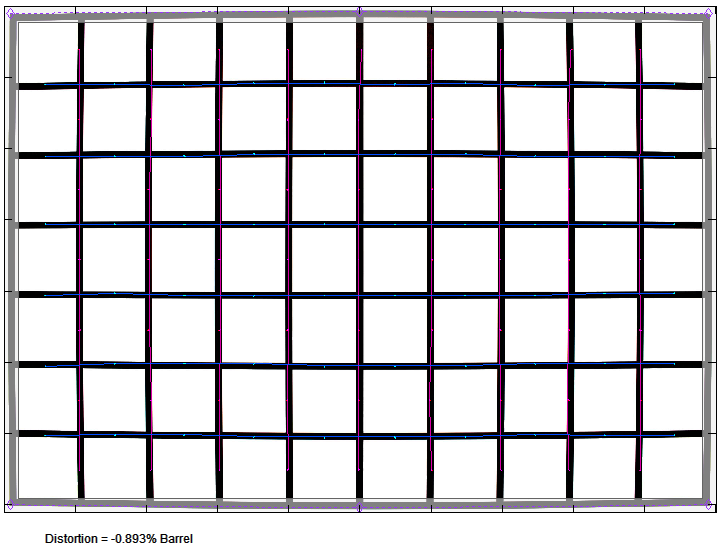|
Canon EF-S 24mm f/2.8 STM - Review / Test Report - Analysis |
|
Lens Reviews -
Canon EOS (APS-C)
|
|
Page 2 of 2

Distortion
The Canon pancake lens produces only a slight amount of barrel distortion (0.9%). This is usually not an issue in most scenes.

Vignetting
The EF-S 24mm f/2.8 STM has a weak spot - vignetting. At max. aperture, it is rather extreme (1.9 EV/f-stops). In fact the figure reaches beyond the scale that we are usually using for APS-C format cameras. The good news is, however, that the issue improves drastically at f/4 and it's not relevant from f/5.6 onward.

MTF (resolution)
Pancake prime lenses tend to be easy fellows - due to their comparatively slow speed, their design is not overly complicated and we are rarely seeing any issues. This applies to the Canon EF-S 24mm f/2.8 STM as well. The center resolution is already excellent at f/2.8 and even the borders & corners are easily very good. Stopping down to f/4 improves the performance a bit to an excellent quality across the image frame. Due to the usual diffraction effects the performance decreases at f/8 and, of course, more so at f/11. However, the quality is still usable here. f/16 should be avoided on APS-C cameras in any case (unless needed). There is a bit of field curvature. Residual spherical aberrations (focus shifts) are not an issue.
The tested sample had a good centering quality.
Please note that the MTF results are not directly comparable across the different systems!
Below is a simplified summary of the formal findings. The chart shows line widths per picture height (LW/PH) which can be taken as a measure for sharpness.
If you want to know more about the MTF50 figures you may check out the corresponding Imatest Explanations
Chromatic Aberrations (CAs)
Lateral CAs (color shadows at the image borders) stay at or below an average pixel width of around 0.7px at the image borders. This is basically negligible.

VerdictWe think that pancake lenses are slightly odd approach for minimizing the size of DSLR setup - if you want really small gear, mirrorless cameras are the way to go. That being said, many users seem to disagree here and we can't really argue against the obvious success of the Canon EF 40mm f/2.8 STM anyway. Thus it's good news that APS-C format users can now enjoy the benefits of a moderate wide-angle pancake lens as well. There's also nothing wrong with the optical performance of the new Canon EF-S 24mm f/2.8 STM. This is especially true for the bitingly sharp center but even the border and corner quality is on a very high level straight from f/2.8. The low amount of lateral CAs contributes to the very high sharpness perception. The barrel distortion is low and rarely an issue. On the downside, the lens produces a rather massive amount of light falloff at max. aperture but stopping down to f/4 solves most of the issue already. While we haven't tested it formally, the quality of the bokeh is not a highlight but not terrible either.
The build quality of the lens is on a very high level although we would have preferred to get a lens with a constant physical length across the focus range. Canon's new STM (stepping motor) AF is good but not quite as fast as the more common (ring-type) USM drive. It has been optimized for live-view mode/movies but your camera has to be aligned for this as well. The AF tracking capabilities are sub-par although that's not really a primary use case here anyway.
The Canon EF-S 24mm f/2.8 STM is certainly a fine lens offered at an extraordinarily low price. Therefore ... highly recommended!
|